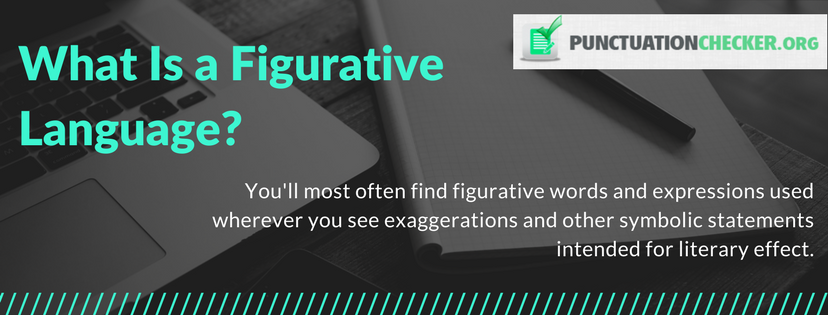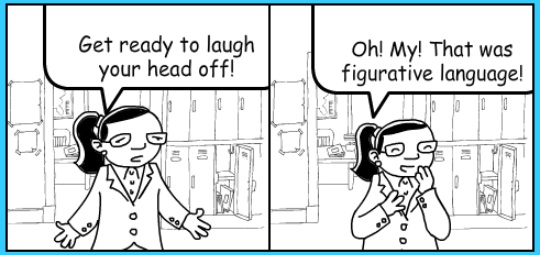Your Ultimate Figurative Language Worksheet
If you really want to make your writing stand out, you can’t rely solely on literal language whereby you mean what you’ve written and nothing beyond that. To make a difference to how your readers think and feel, you’ll need to master another kind of writing. Use the examples and explanations in this figurative language worksheet and reach a whole new level of English communication.
What Is a Figurative Language?
The simplest way to explain what is figurative language is to say that it’s a means of making a point by going beyond the literal meaning of the words chosen. You’ll most often find figurative words and expressions used wherever you see exaggerations and other symbolic statements intended for literary effect. One such example is the concept of hyperbole which helps to give an extreme phrase or word meaning, but there are plenty of others as you’ll quickly learn.
This is the best figurative language definition possible without resorting to specific examples. As you can probably see, it’s not enough to merely explain the breadth and depth of this kind of writing with a simple figurative language definition, so let’s elaborate upon the various kinds you can expect to find when you read poetry, novels, and even newspapers.

Types of Figurative Language
There are so many different figurative language examples we could use to learn the different kinds. Consider the excerpts below and you’ll get the idea soon enough:
- Use a metaphor to compare two objects that are not literally the same. If taken literally, it would sound like the first object actually is the second object. To use an example, you might say, “Don’t trust him because he’s a real snake in the grass.” Obviously, a person cannot be both a human and a snake. It’s a comparative device that’s frequently used in literature as well as everyday speech.
- Use a simile when you want to describe a quality or characteristic that suggests one object behaves like another despite being different. For example, “He runs as fast as the wind.” You’ll commonly see the word “as” used in a simile. Make sure you don’t mistake a smile for a metaphor or vice versa. Of all the various types of figurative language, these two are the most often mixed up.
- Use personification to give an inanimate object a quintessentially human quality. “The leaves danced in the wind,” would be a good example. Of course, leaves can’t dance but it gives a wonderful sense of their movement by describing it as such.
- As mentioned in passing above, hyperbole is a common figurative element in all kinds of prose, poetry and so on. It is basically the art of exaggerating for literary or comedic effect. “He hit the ball a mile out of the ballpark” is a clearly impossible event but it does wonders to give the impression of a truly amazing baseball player.
- Symbolism makes use of a noun that has its own meaning aside from the one meant for its use in a sentence. You could quite easily use a country’s national flag to represent a number of qualities including patriotism.
- Onomatopoeia is a means of using a word to describe an action that sounds remarkably like the word itself. This is most notable in languages like Japanese but it’s certainly present in English, too. Bees “buzz”, after all. This is one of the lesser-used types of figurative language but one of the most powerful when co-opted appropriately.
- You can use an idiom to describe a particular event without referring to it explicitly. This is a great source of amusement as well as a way to avoid approaching awkward topics directly. For example, if

Image credit: afullclassroom.blogspot.com
someone “popped his clogs” in British English, it means that he died. You’ll find all sorts of idioms throughout the various global varieties of English and you’ll often see that they aren’t all understood by every group. The most overused of these become known as clichés.
- You can often use a single word to represent an entire concept that officially uses much more. This is an aspect of figurative language that you’ll find in colloquial speech. For example, many Americans are particularly fond of calling their credit card “plastic.” You’ll even find businesses telling their customers that “We accept plastic.”
- Assonance is a great way to make your sentences have a real ring to them. It refers to the repetition of a sound like in the phrase, “the need for speed.”
- Metonymy has to do with using one related word to express the meaning of another. This is most commonly done in journalism and international affairs where a country is referred to by its capital city.
Don’t miss your chance to make use of a semicolon checker today!
Mistakes to Avoid
These figurative language examples constitute the most common mistakes made by native speakers and second language learners alike. Consider the definition of each type of figurative language and make the right choice for your purposes.
- Don’t mix up similes and metaphor. To keep them separate, remember that a metaphor uses “is” whereas a simile uses “as”.
- Don’t assume that all words have only one meaning. English has many words and phrases that mean nothing like what you might think if you took everything literally.
Consider all your linguistic options by studying the information in this figurative language worksheet. Once you understand the difference between all these different examples, you’ll quickly get to grips with how to express yourself in whatever you decide to write. You’ll be able to write prose, poetry or whatever else you put your mind to. Also, do not forget to avoid other grammatical common mistakes, check past tense in your text, use punctuation in your sentences correctly and you’ll make a real impression on your English teacher.








